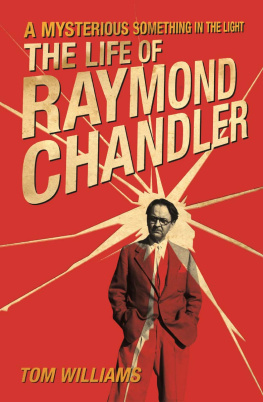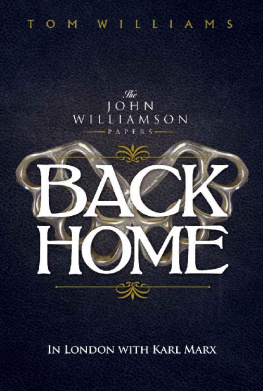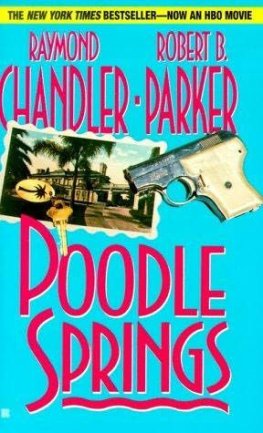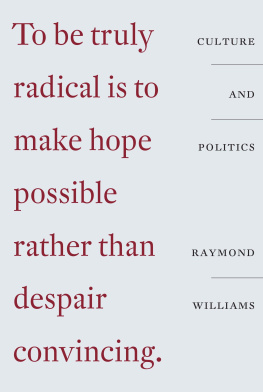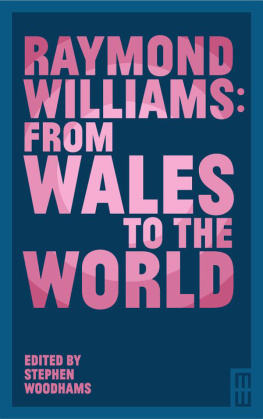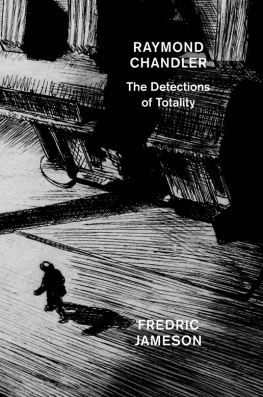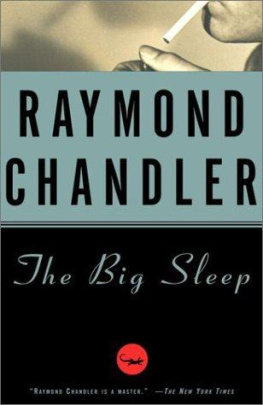

Copyright 2012 Tom Williams
All rights reserved
First published in Great Britain in 2012 by
Aurum Press Ltd
7477 White Lion Street
London N1 9PF England
www.aurumpress.co.uk
This edition published in the United States in 2013 by
Chicago Review Press, Incorporated
814 North Franklin Street
Chicago, Illinois 60610
ISBN 978-1-61374-840-4
All quotations reprinted by kind permission of the estate of Raymond Chandler.
The following images, all featured in the photo insert of this book, were supplied by the Bodleian Library, University of Oxford, with assistance from the estate of Raymond Chandler. All MS Department/Chandler 83/Folio: photo insert .
Every effort has been made to trace the copyright holders of material quoted in this book. If application is made in writing to the publisher, any omissions will be included in future editions.
Interior design: PerfecType, Nashville, TN
Printed in the United States of America
5 4 3 2 1
This book is dedicated to Signe and to the memory of Edward Eason, grandpa, with love: 19212010
CONTENTS
Index
ACKNOWLEDGMENTS
The title page of a book tends to promote the lie that it is the work of an individual, masking the truth that it is, in fact, a collective endeavor. This book is no different. Though it is my name on the cover, I could not have written it without the support of a great many people.
First and foremost, thank you to Graham C. Greene and the Estate of Raymond Chandler for allowing me to quote extensively from Chandlers work and also, to the libraries that house Chandlers archives. In California the staff at the Charles E. Young Research Library Department of Special Collections were always welcoming and patient even to the extent that, during my last weeks in California, they drew my attention to a new cache of letters, recently arrived, that helped alter the tenor of this book. In Britain, Chandlers papers reside with the Special Collection Department of the Bodleian Library at Oxford University. Dr. Judith Priestman, who curates the archive, and Colin Harris, who manages the reading rooms, along with their staff, were exceptionally helpful throughout this process. My thanks also to Dr. Jan Piggott, who was Keeper of the Archives at Dulwich College when I first visited it, and also to his successor, Calista Lucy. Her pamphlet, A College Boy: Raymond Chandler at Dulwich College 19001905, though written for a very different audience, was crucial to my understanding of Chandlers early years. I am also grateful to the staff at the British Library in London, where parts of this book were written, and the Special Collections Department at the University of Bristol, which made the Penguin Archive available to me, in particular the letters of Hamish Hamilton.
Of course, I must also acknowledge my debts to Chandlers previous biographers: the late Frank MacShane, Tom Hiney, and Judith Freeman. Judith in particular was both friendly and helpful. Thanks to both Robert F. Moss and to Loren Latker, whose own researches into Raymond Chandler have been very helpful to me. While we may not always have agreed on everything, we share the view that Raymond Chandler is a subject of endless fascination.
Thank you to the late Natasha Spender, to Randall Lloyd and to Sybil Davis, who answered my questions patiently. Also to Richard Rayner, who introduced me to both Carey McWilliams and to Leslie T. White and helped shape some of my thinking about Chandler. His own book, A Bright and Guilty Place, was an invaluable source of period material. Richard, I certainly owe you a beer.
I spent three months doing research in Los Angeles, California. Having never visited the city before, I arrived knowing no one but left with several good friends. Thank you to Philip Collins, Kay Tornborg, Zach and Kristina Ayers, Manhattan Perry, Richard Hodkinson, Clara Perez, Louisa Gamon, and Rachel OBrien. Thanks also to Oliver Guy Watkins and Nick Leader in London, who shared their West Coast connections with me.
The idea for this book was first discussed in a small Cypriot restaurant in Tufnell Park and was nurtured with the help of several people. Thank you to Professor Rene Weis, Robert McCrum, and Alex Clark, all of whom read early drafts of the proposal and helped make it better with their comments. Also thank you to Claire Phillips, whose support at the beginning made this book possible and who deserved better.
Thank you to the team at Aurum Press who have put up with a lot from this writer. Specifically thank you to Melissa Smith, who did the picture research, to Louise Tucker who has answered my naive questions with fortitude, to Ray Newman and Mark Handley who worked on the copyedit, and to Liz Somers, who has done amazing work promoting this book. Lastly, thank you to Sam Harrison, my editor. To say that he is patient is an understatement. His unwavering faith and support under an immense amount of pressure, both personal and professional, has been astonishing and I am unworthy of it. I hope that I will be able to repay you one day.
At Chicago Review Press I should like to thank Yuval Taylor for his careful suggestions and additions, Allison Felus for her help preparing the text for an American audience, and Caitlin Eck for her fantastic efforts with publicity.
It goes without saying that my friends and family have had to put up with a lot while this book was being written. I am sorry for the get-togethers I canceled at the last minute and the dinners and drinks I had to miss. I am very grateful to you all. Specific thanks go to Mark Price, who read and commented on the early chapters, and to Gareth Cadwallader, whose own artistic travails remain an inspiration.
Thanks also to my mother, Judith Parkin, and my father, Gareth Williams, who remained supportive throughout, despite some testing times. And thank you also to my grandparents, who did not doubt that this was possible. Sadly my grandfather died while this book was being written. He was always a quiet inspiration to me and showed the value of books and learning. For that reason he shares the dedication of this book. I hope that he would be proud of it.
Lastly, to Signe, who did not know what she took on when she met me. Through the months and years she gave me the strength to get this book written, even when the task seemed insurmountable. Raymond Chandler never felt that his books were good enough to dedicate to the woman he loved, and he missed his chance. I dont want to risk that. Though this book is unworthy of Signe, it is the best I was able to do. It wont, I hope, always be.
PREFACE
I n 1913 there were two arrivals in Los Angeles that would have lasting consequences for the city. The first was water, which came via a 223-mile aqueduct from the Owens Valley to the San Fernando Valley, and allowed the city to grow beyond the limits of its natural resources. As this great and controversial feat of engineering was nearing completion, the second arrived. He wore a sharp suit, a straw boater circled with the colors of an English public school and carried a silver-tipped cane. His name was Raymond Chandler.
Ray was twenty-five in 1913 and he had spent the previous few months in San Francisco, working odd jobs, trying to make ends meet while supporting his mother, who had only recently joined him in America from England. He had been drawn to Los Angeles by a chance meeting on the ship that had ferried him from London to the United States, but the decision to venture there would be the making of him. Behind him, he had a difficult childhood, a complicated adolescence, and a failed career as a poet. In front of him, he had seven novels and a series of screenplays that would make him one of the most famous writers of the twentieth century. But, as Ray stepped for the first time into the bright, bleached light of L.A., he could not know how his future would unfold. In 1913 he was just a young man, freshly arrived, looking to start a new life.
Next page
